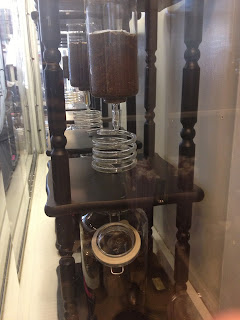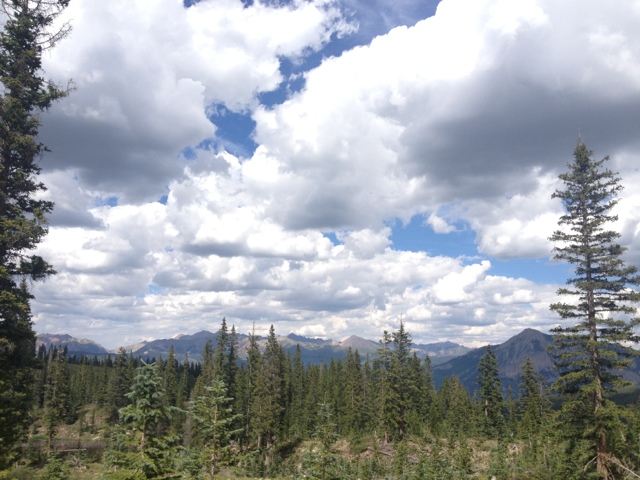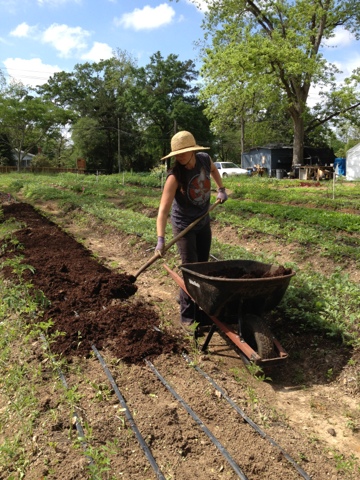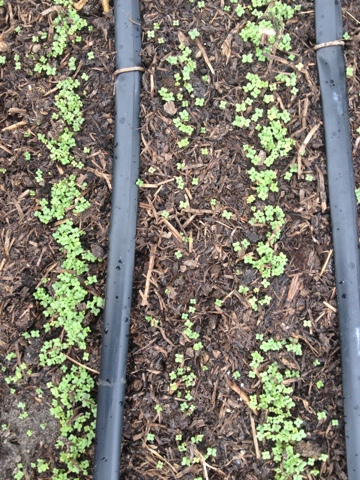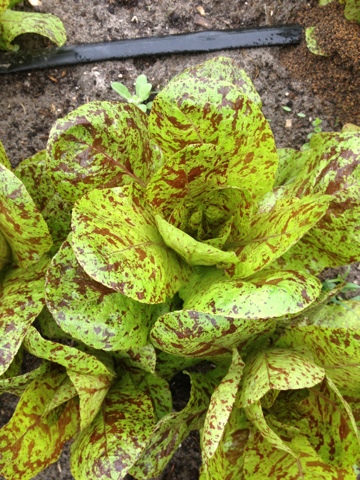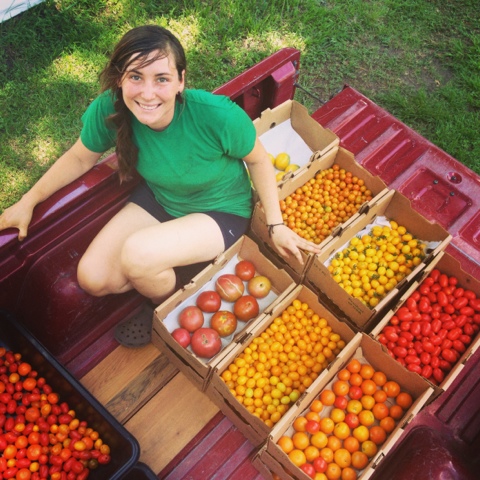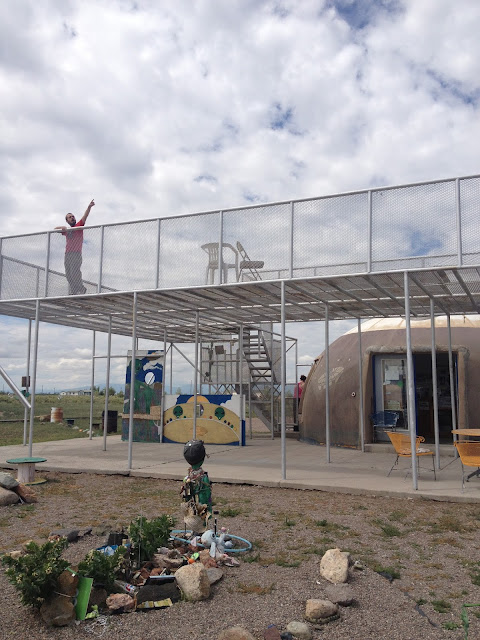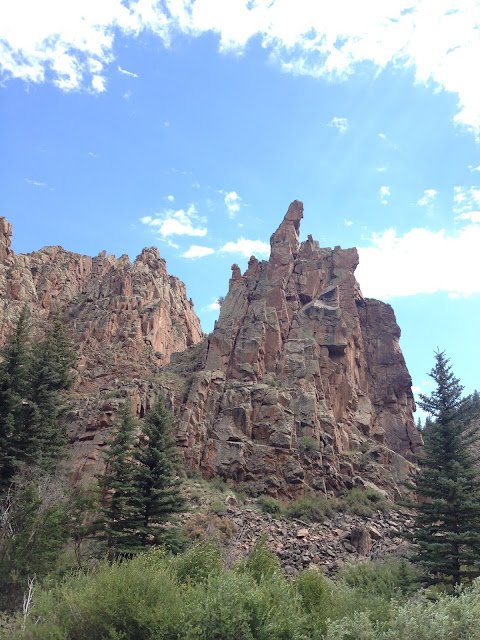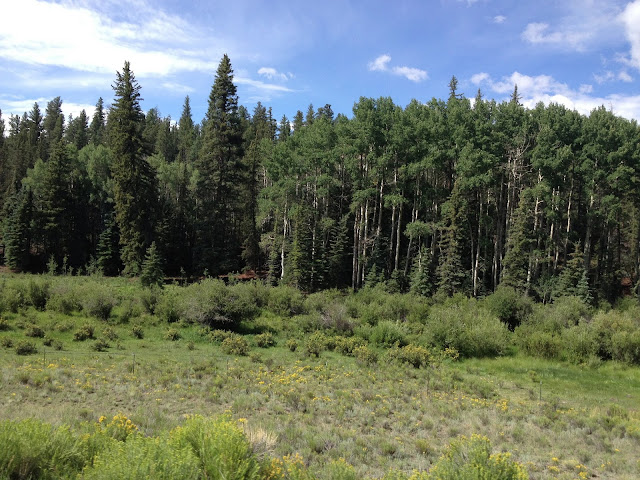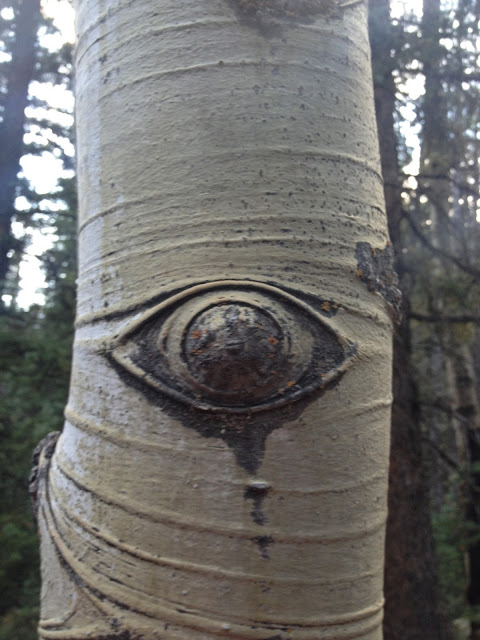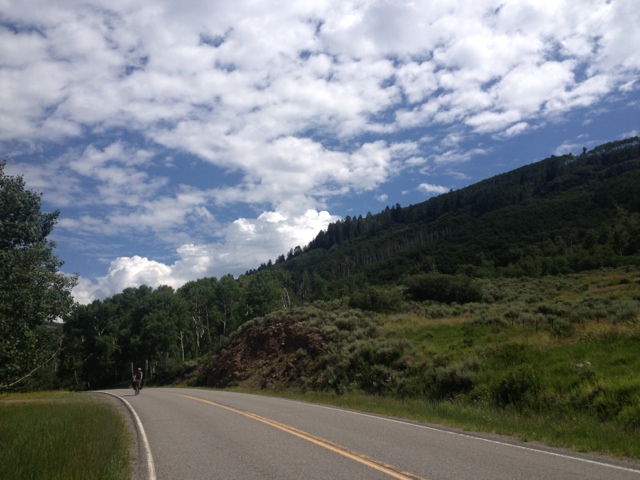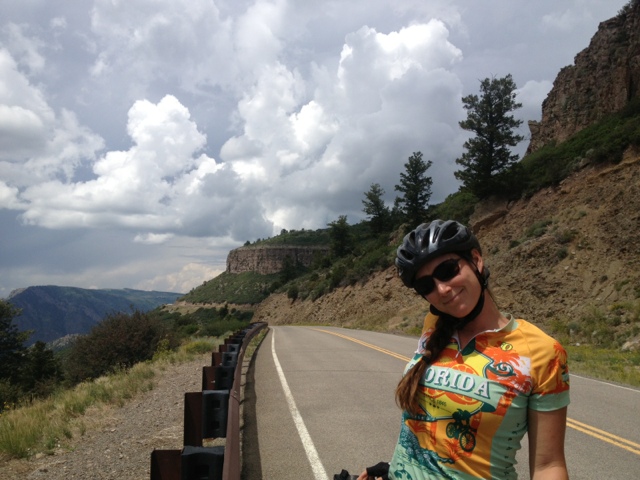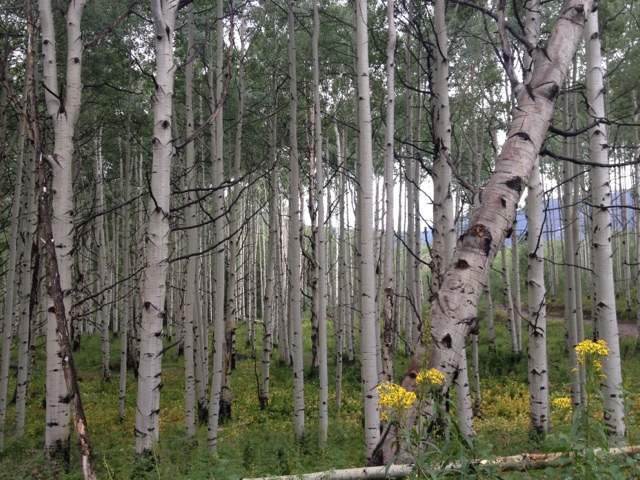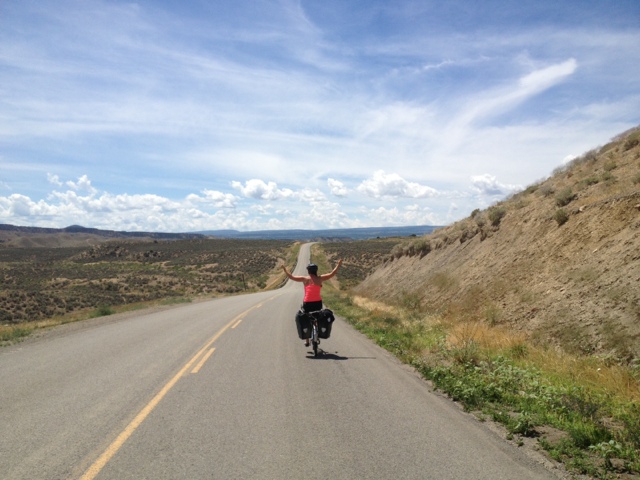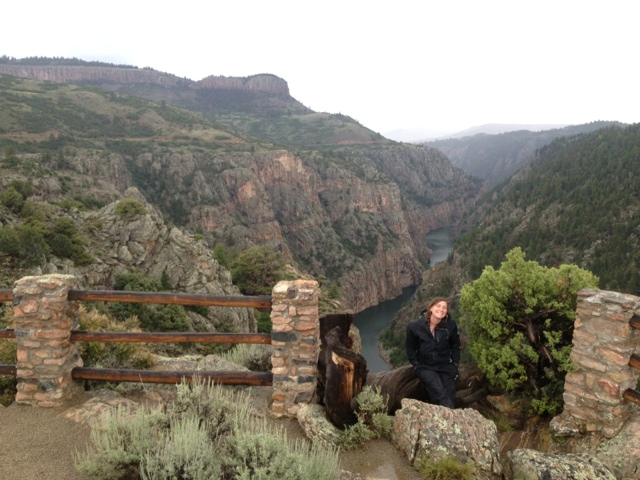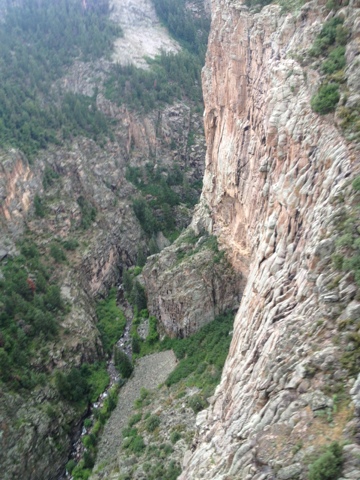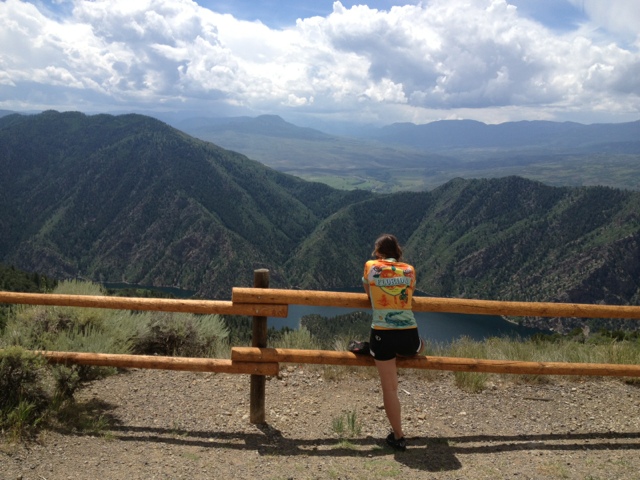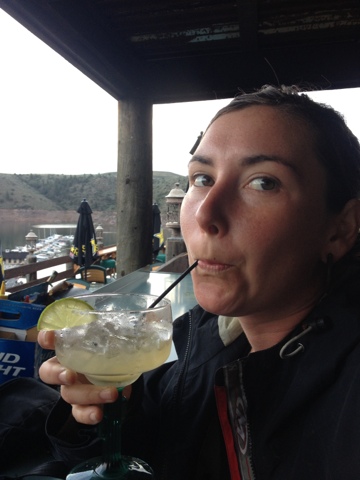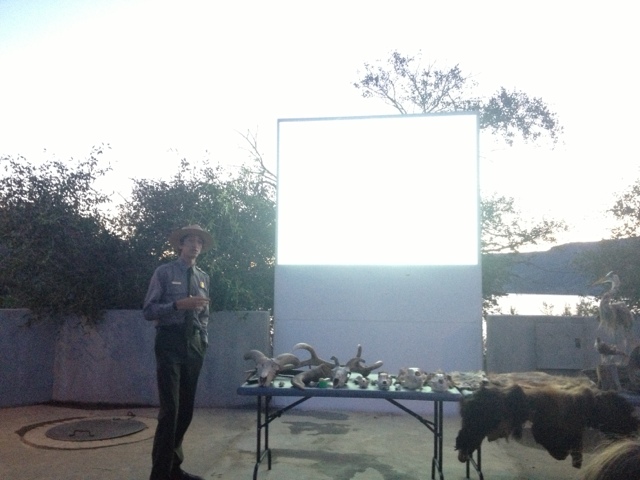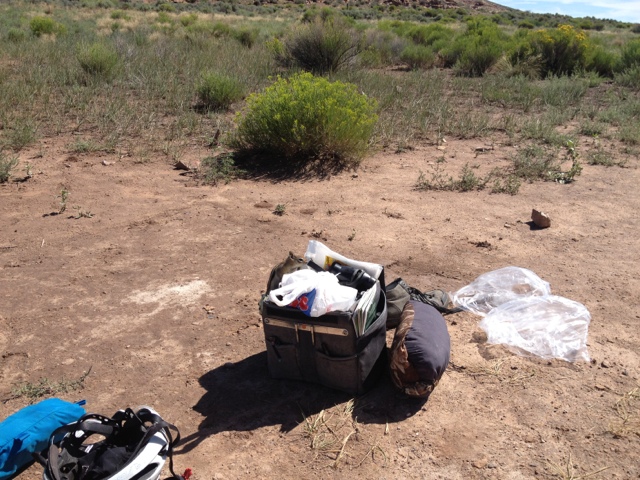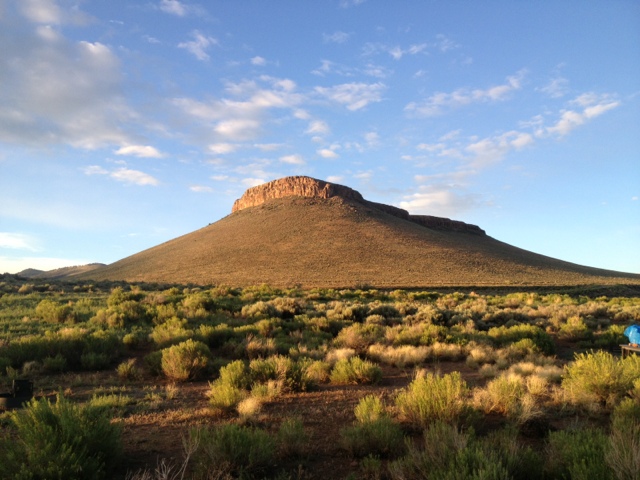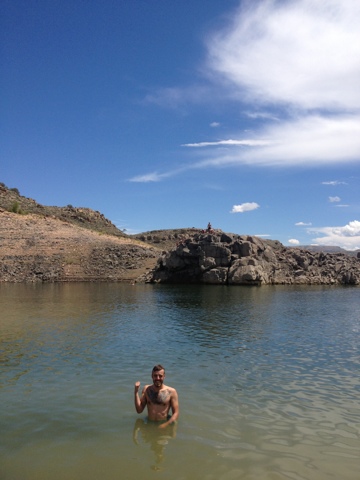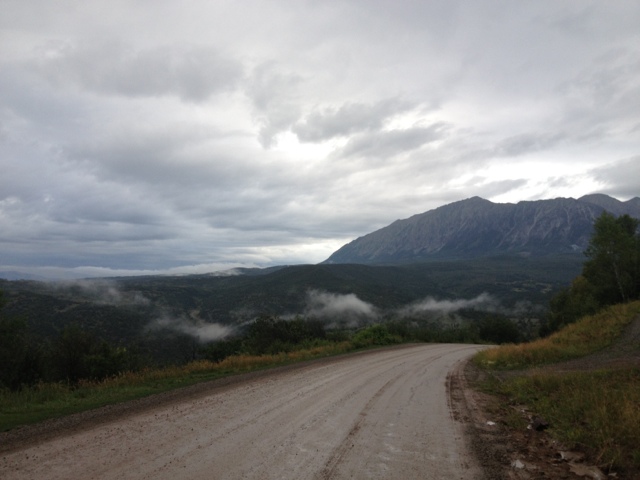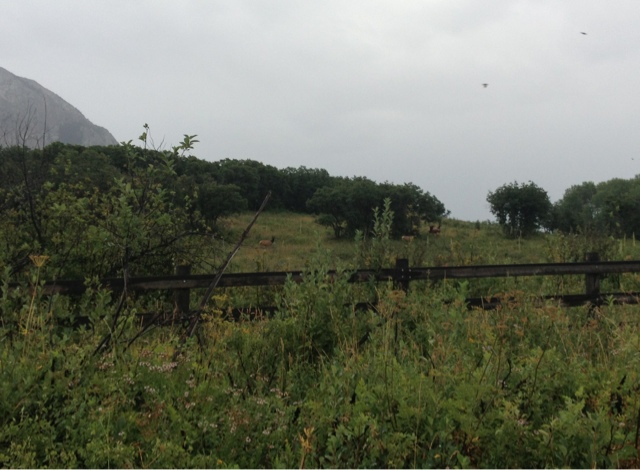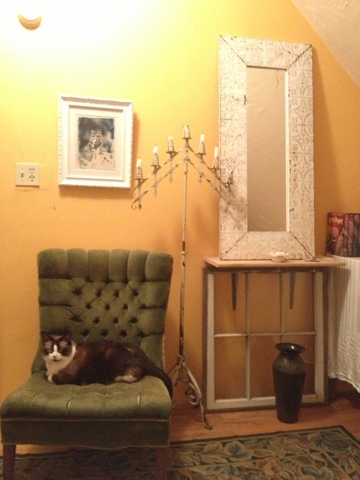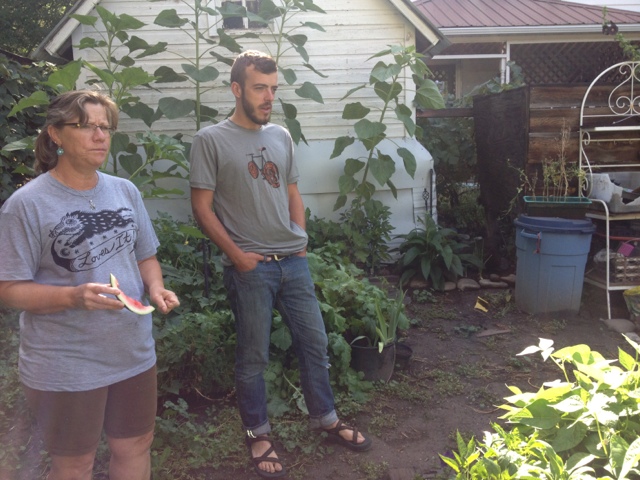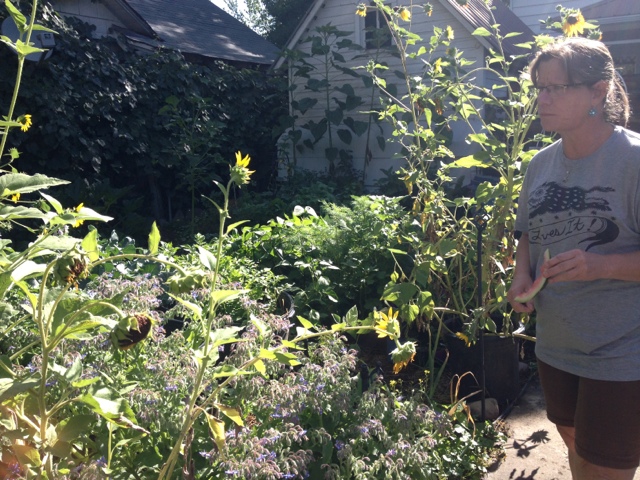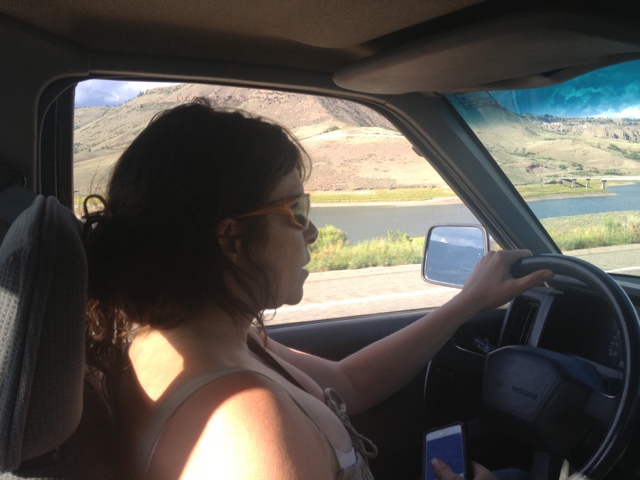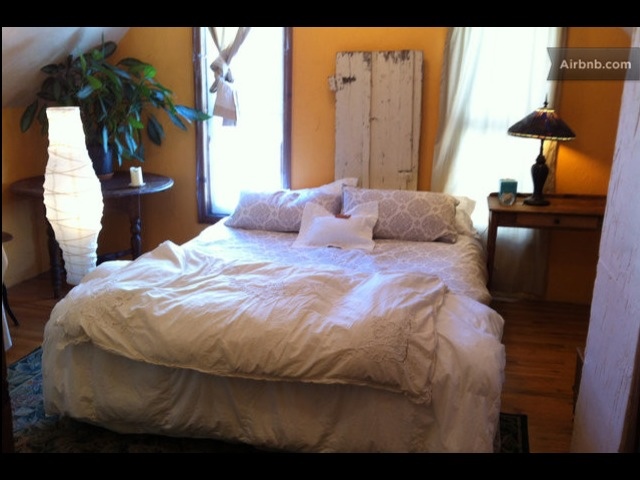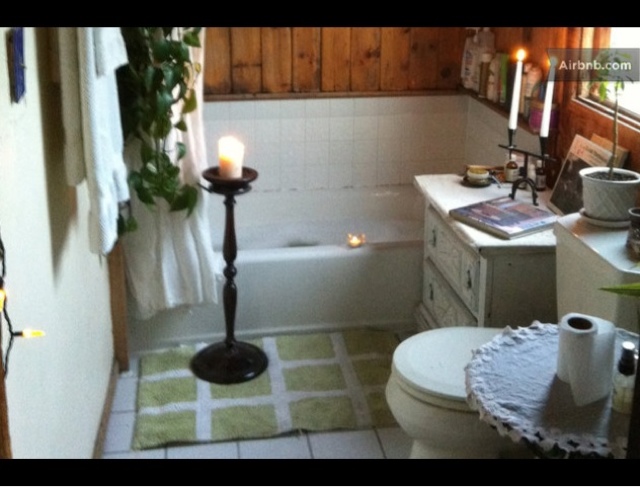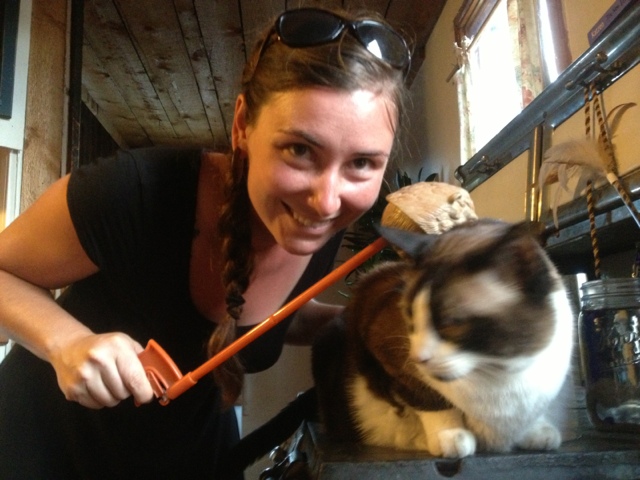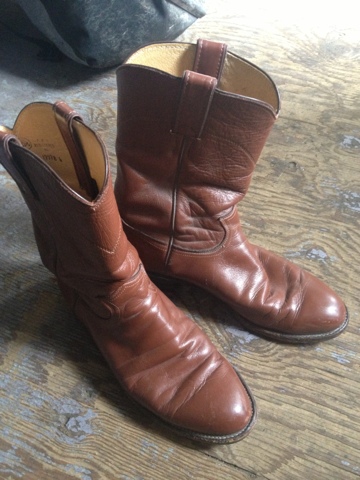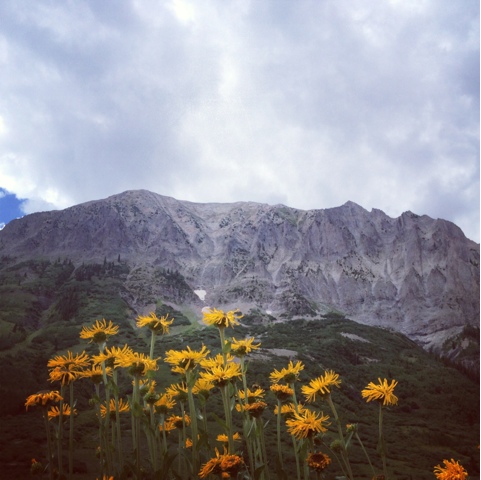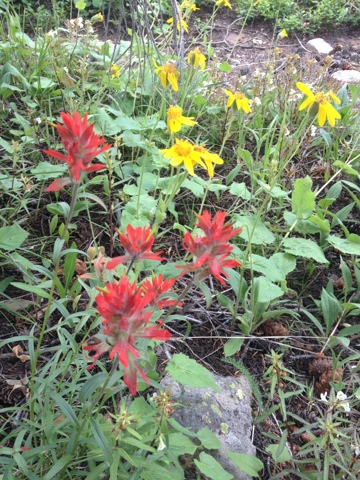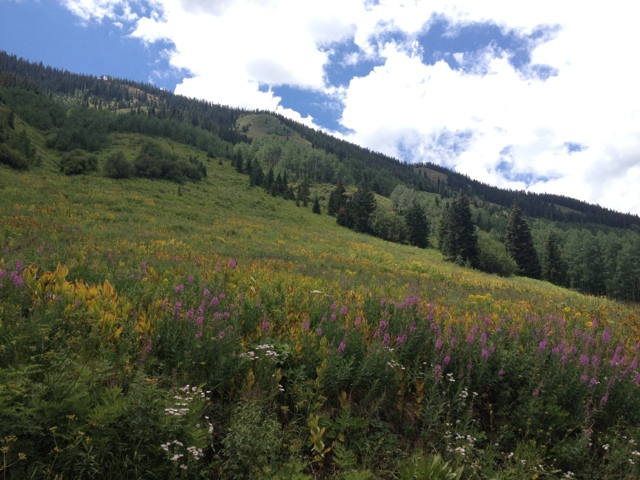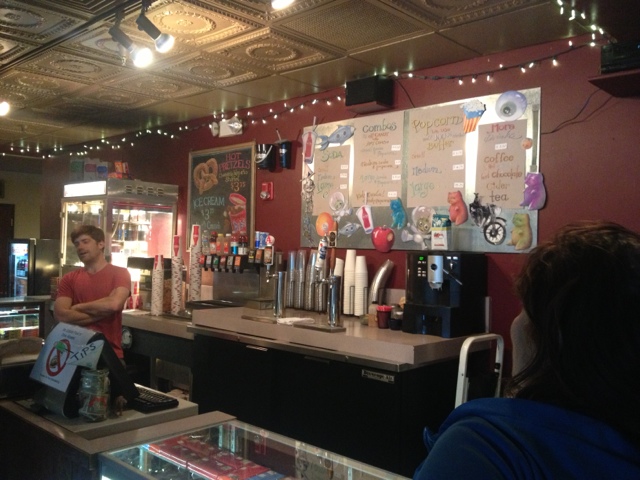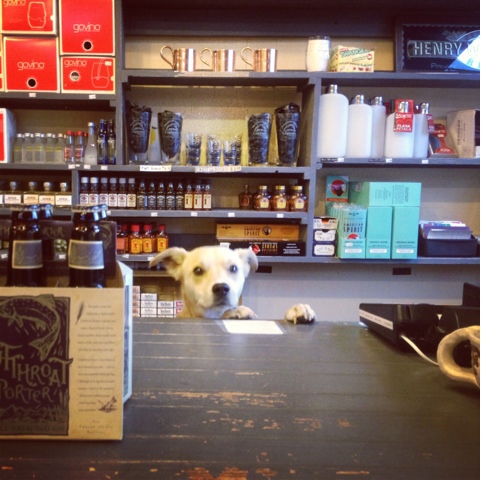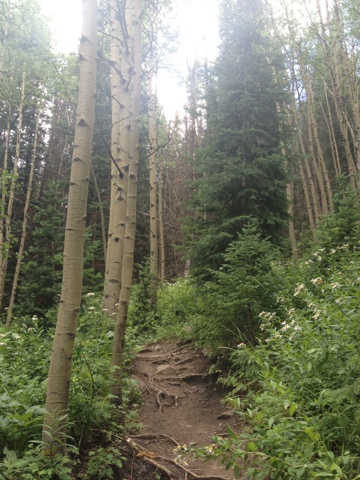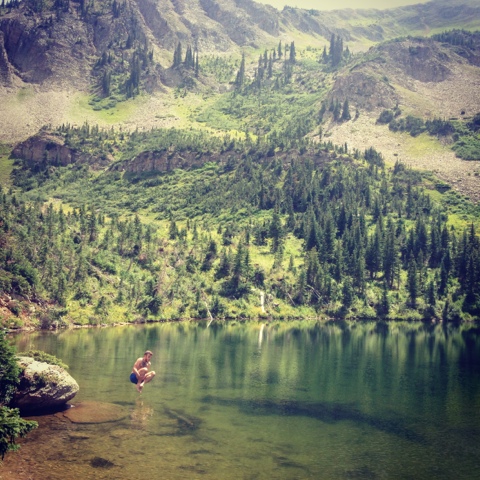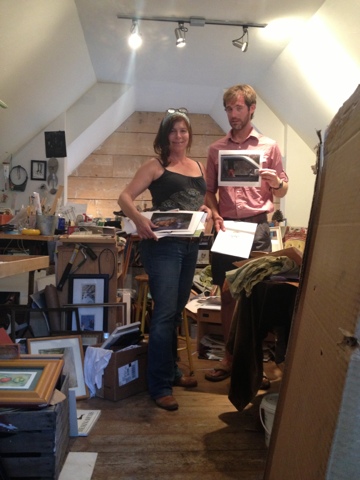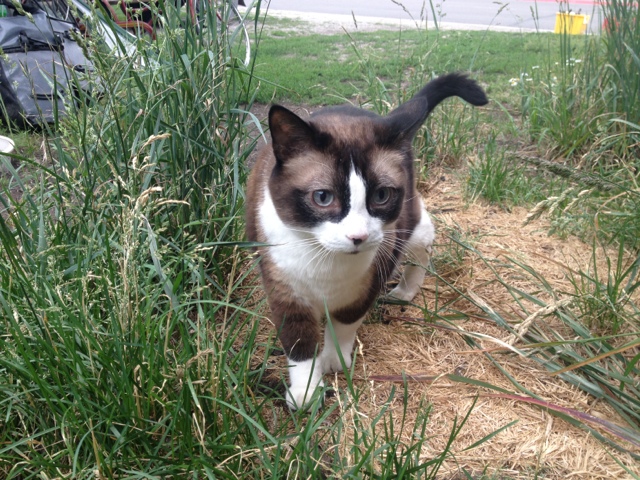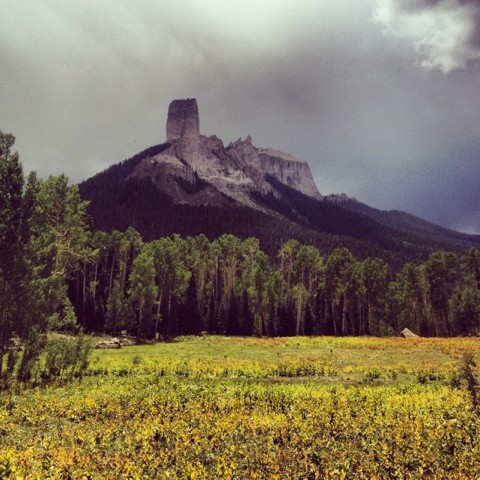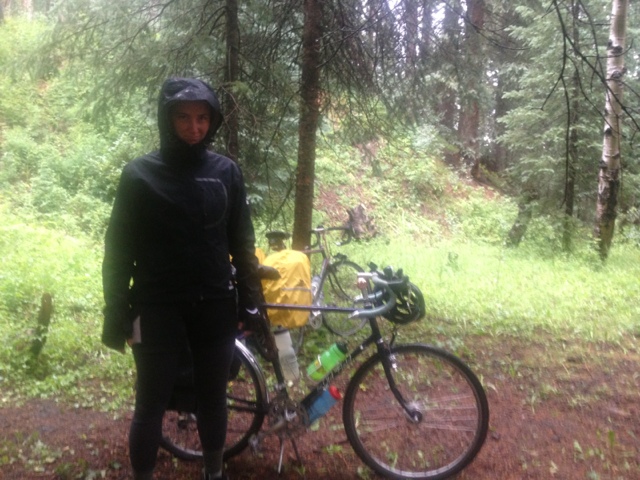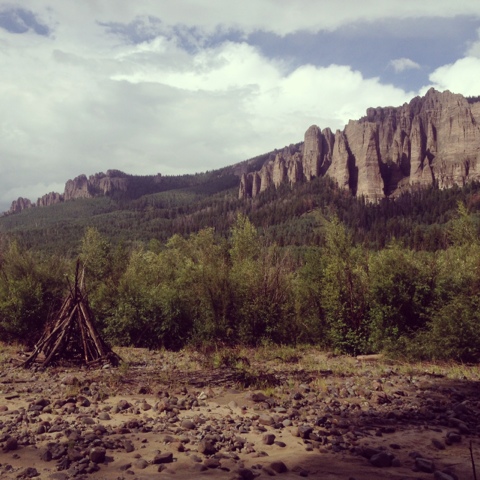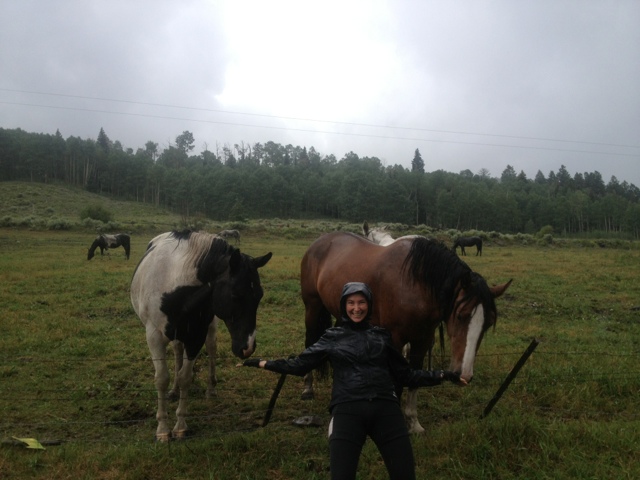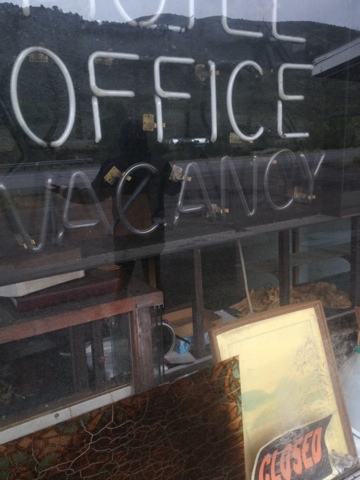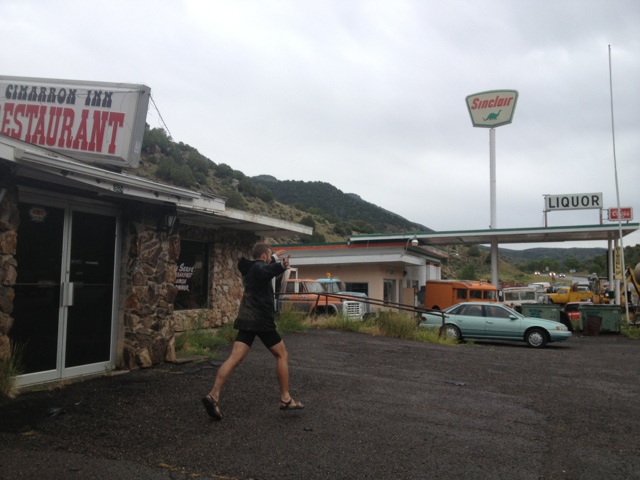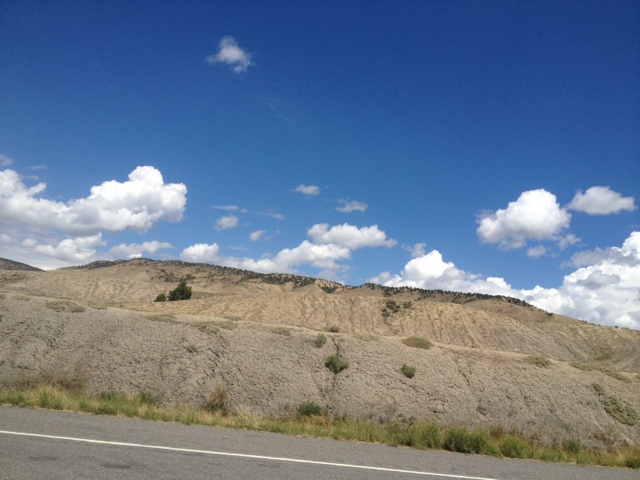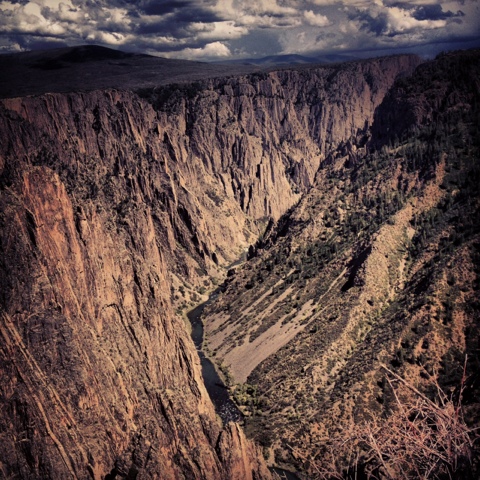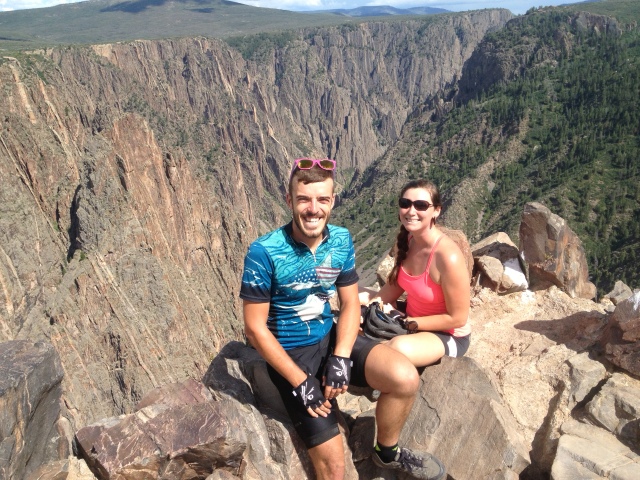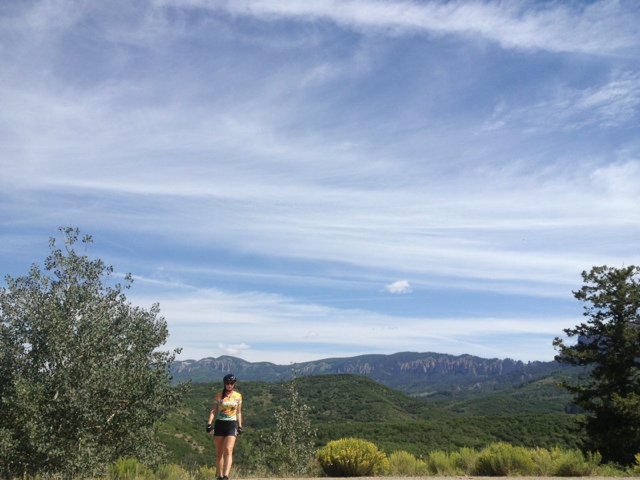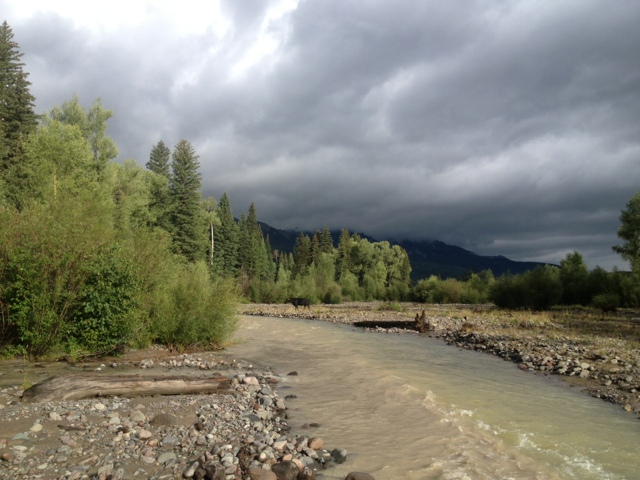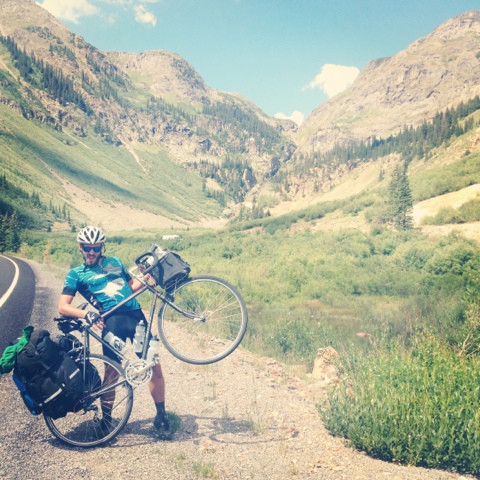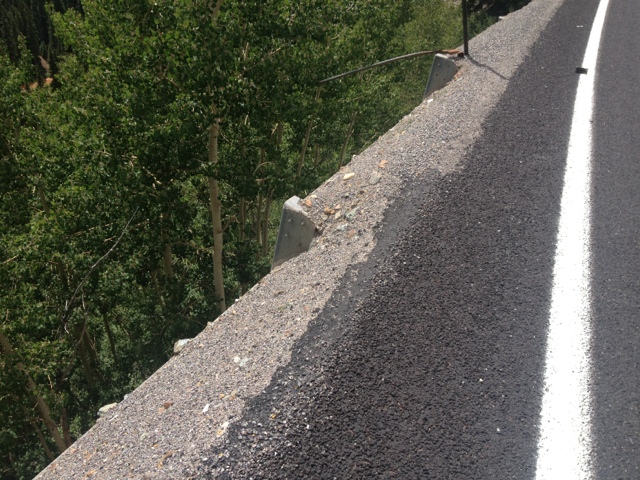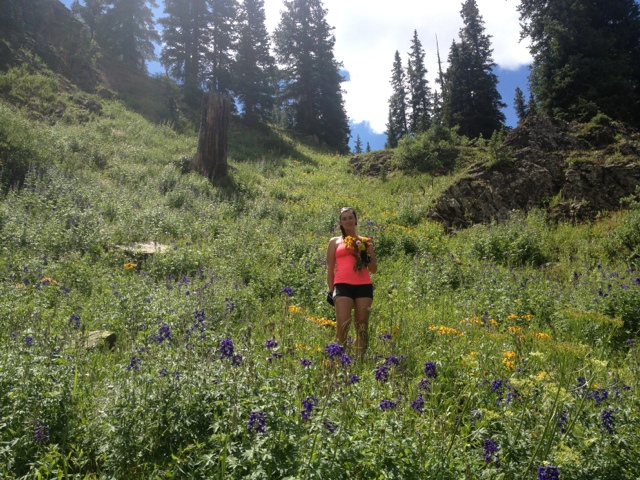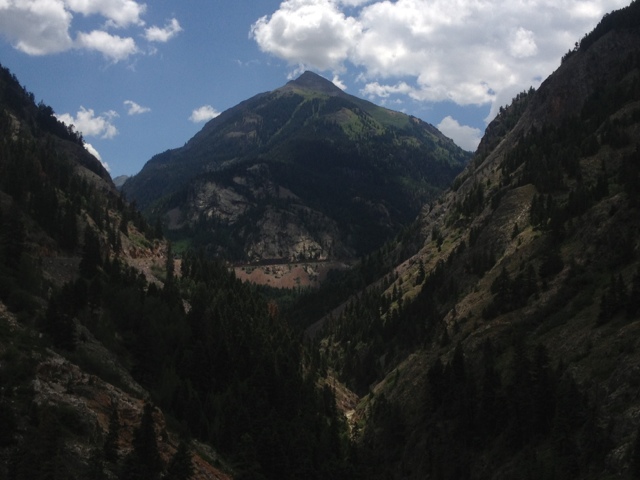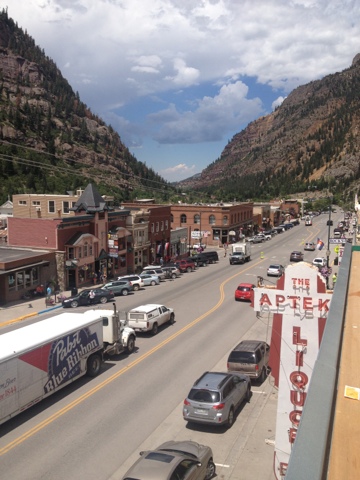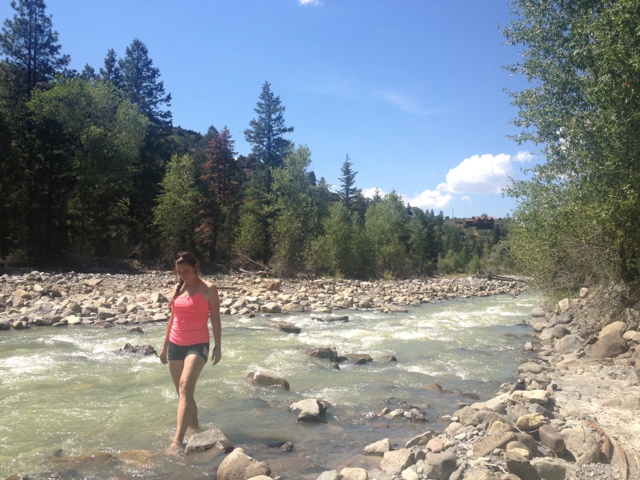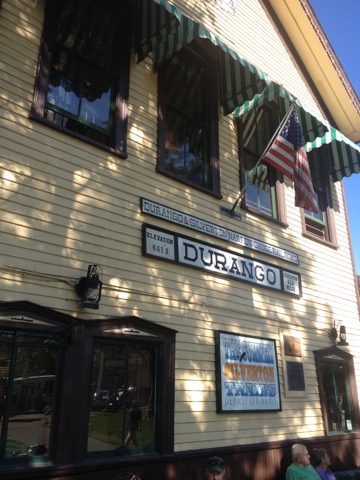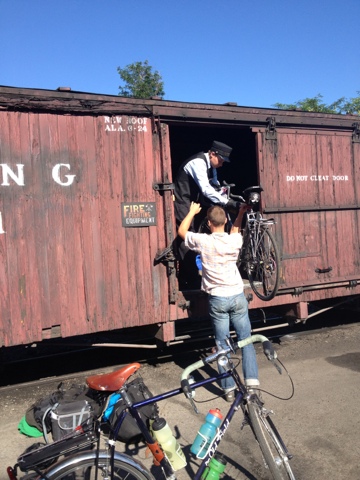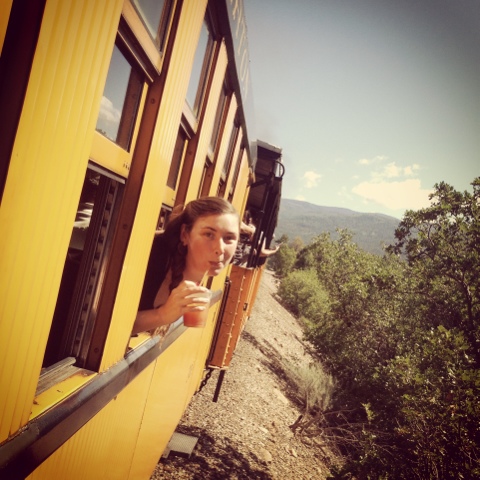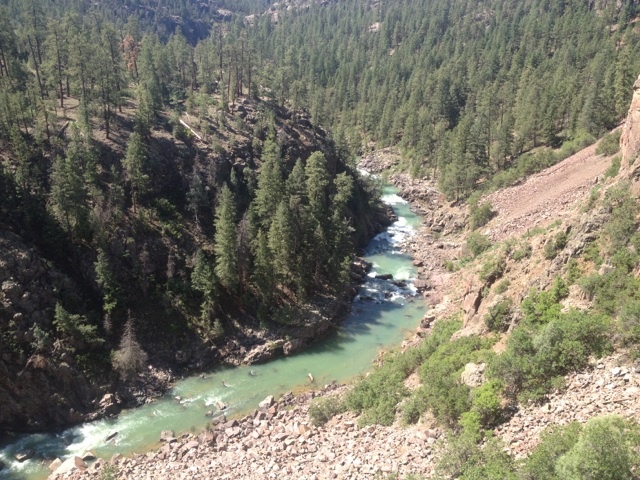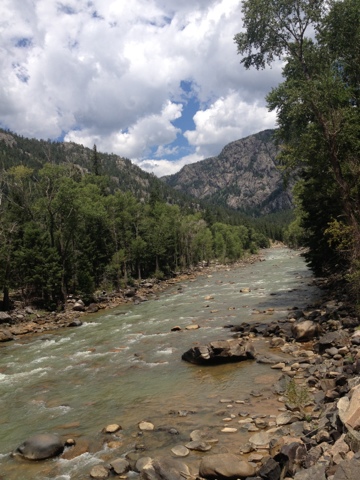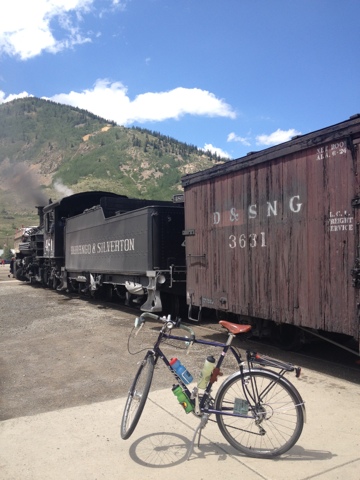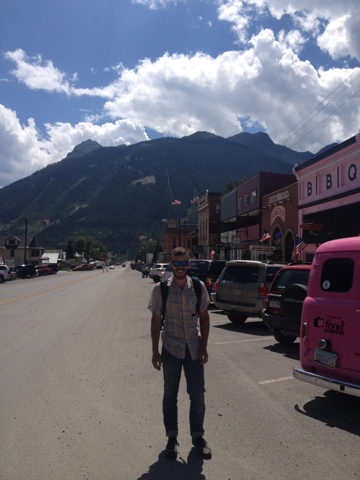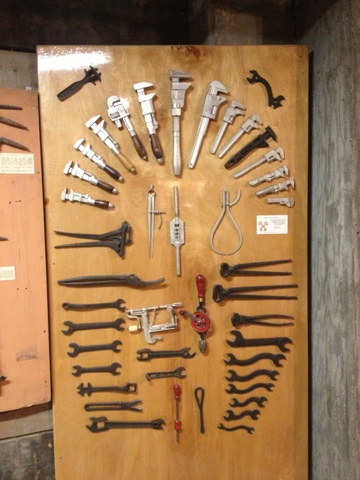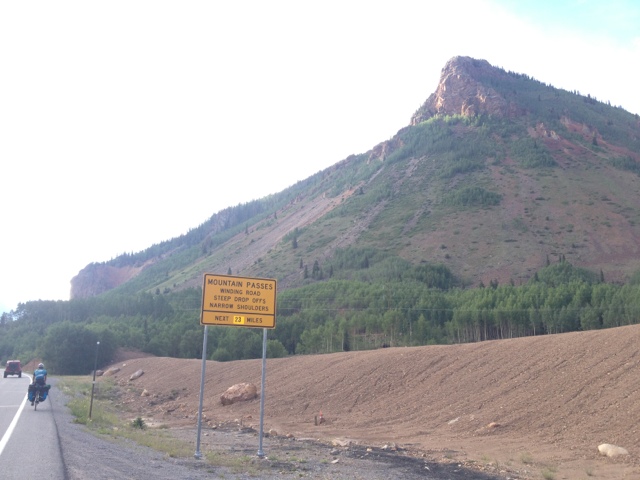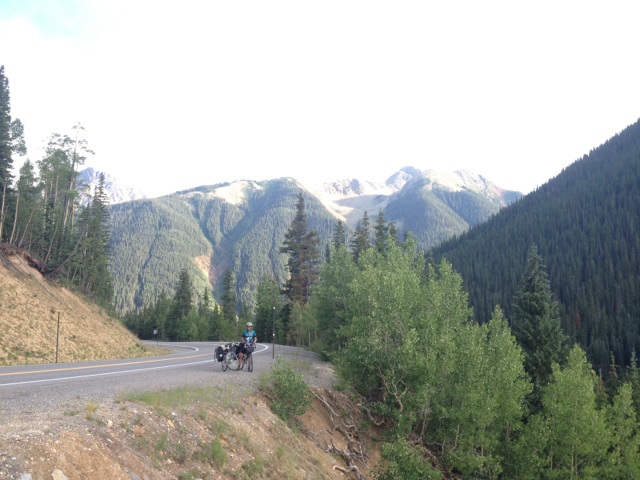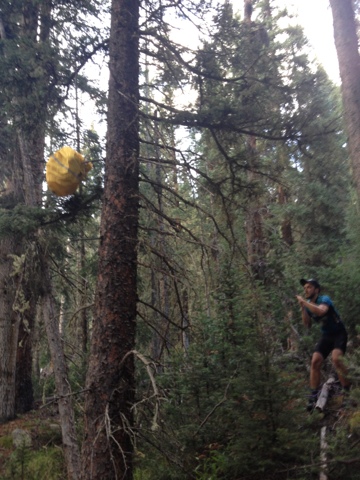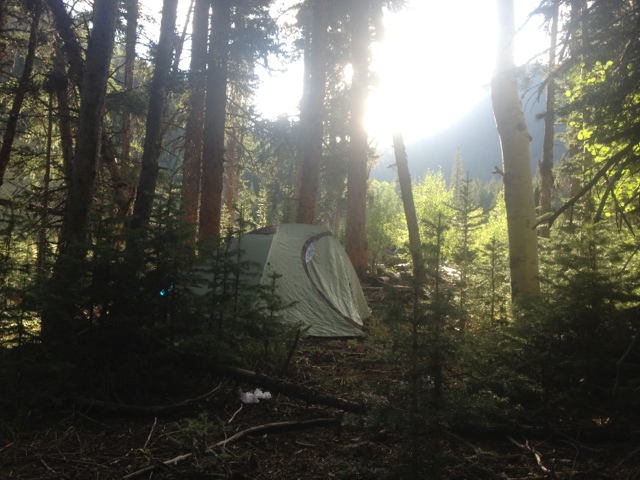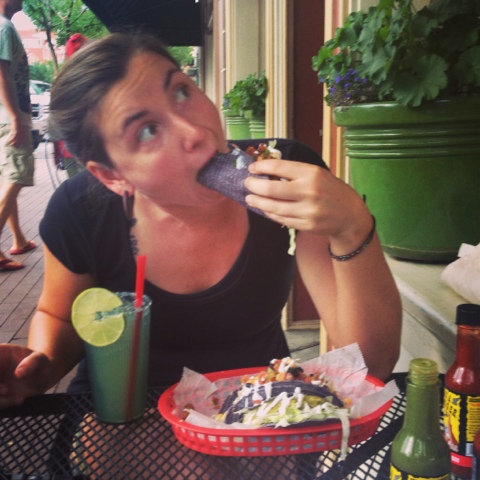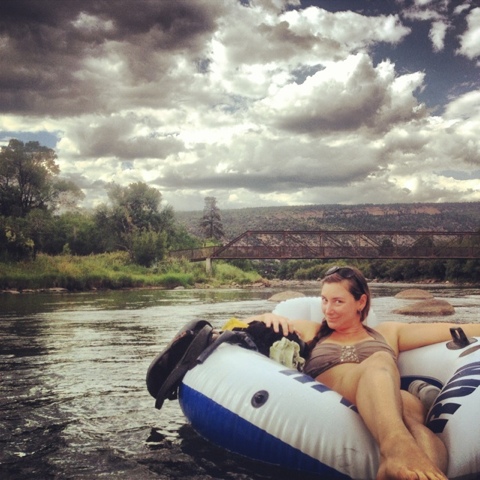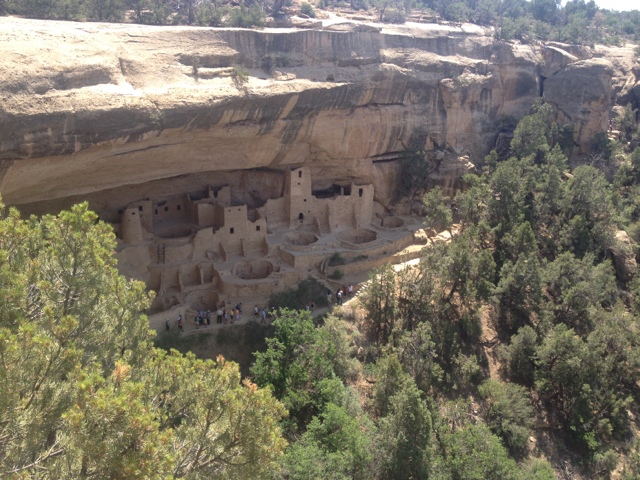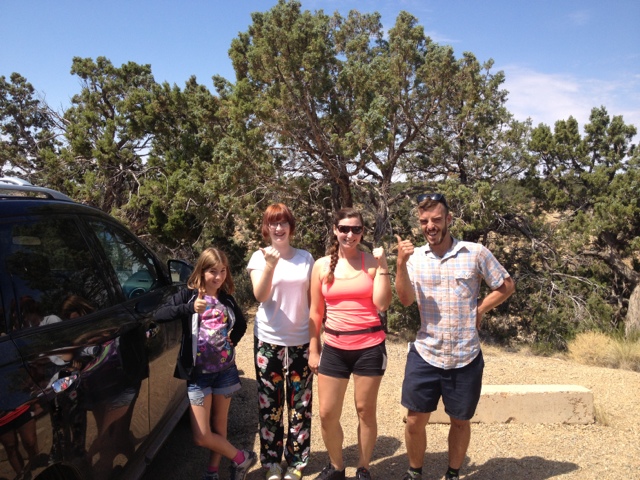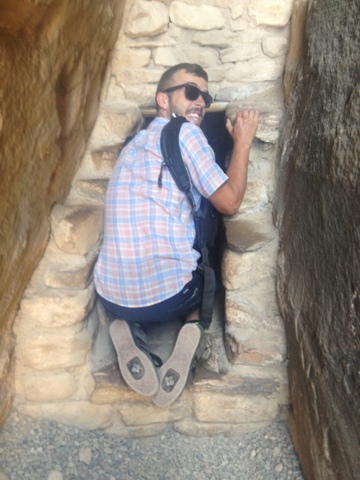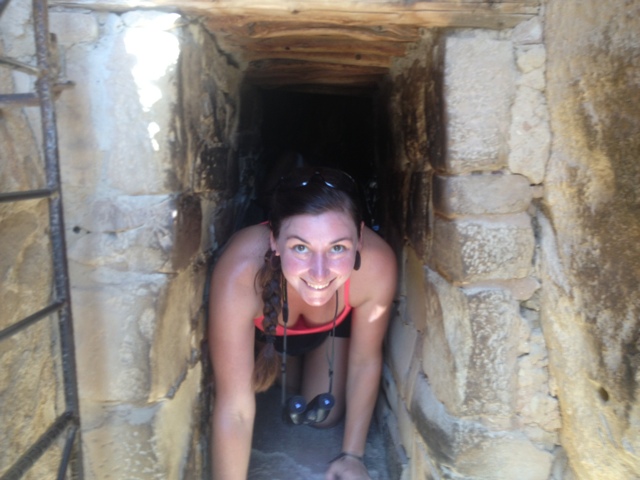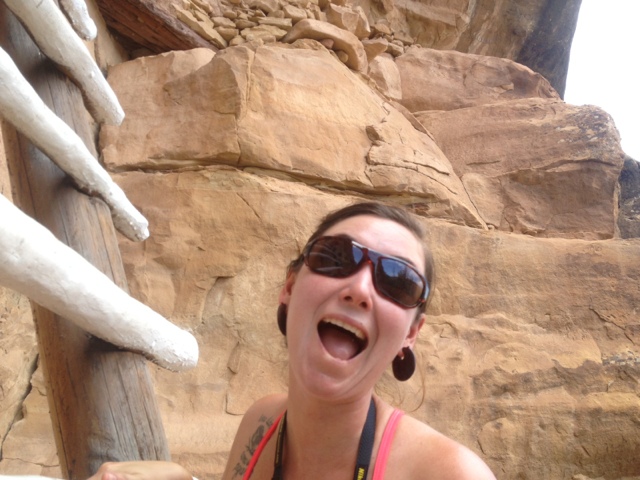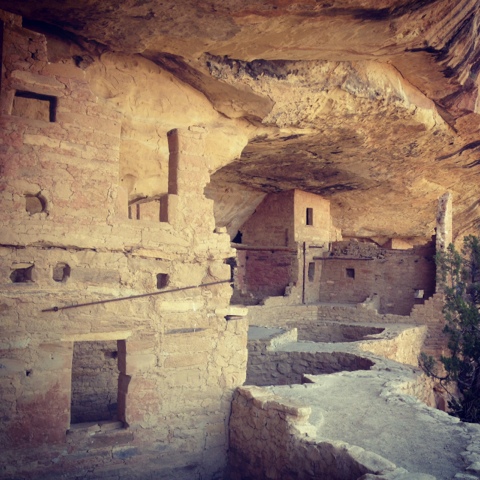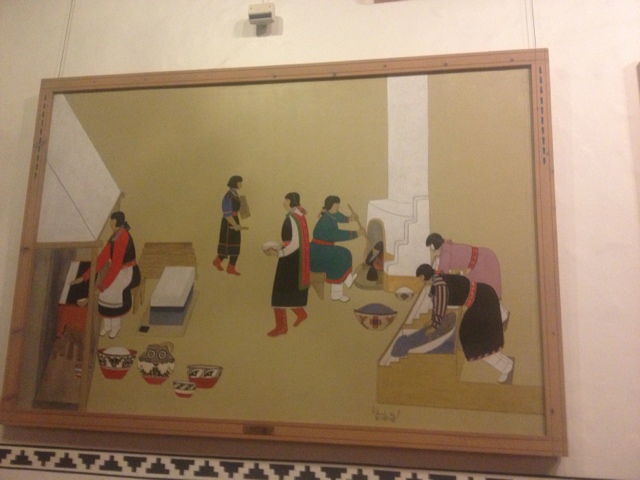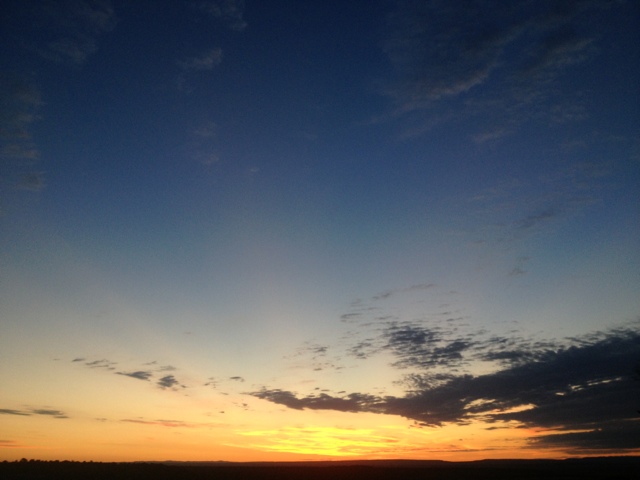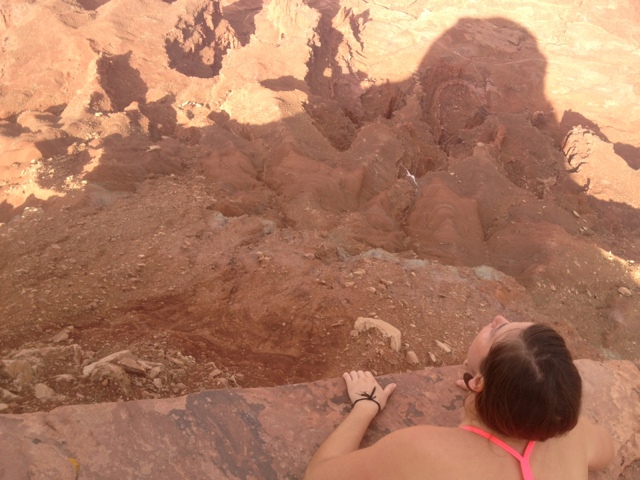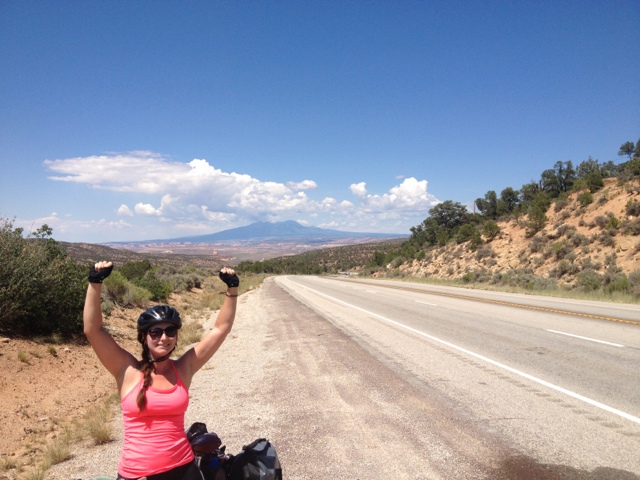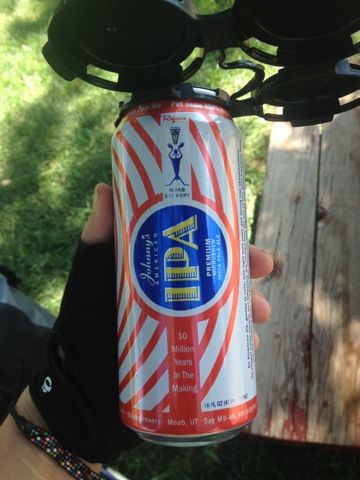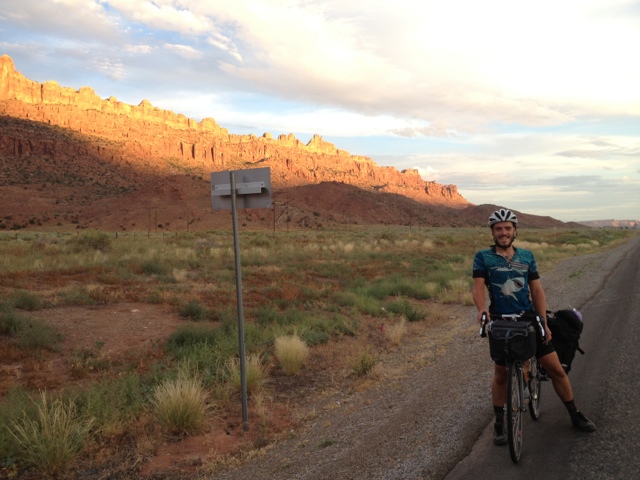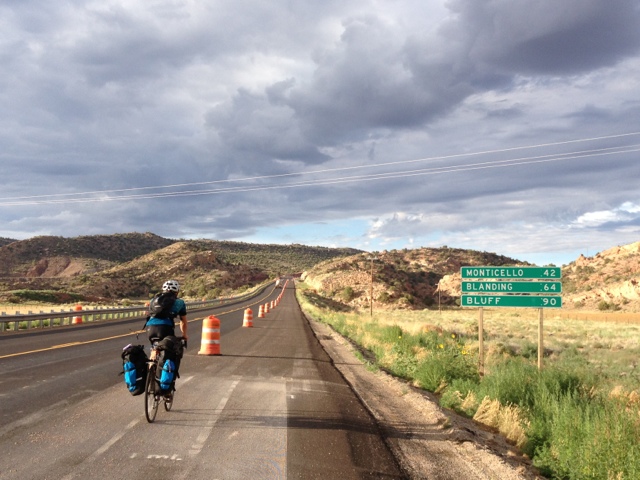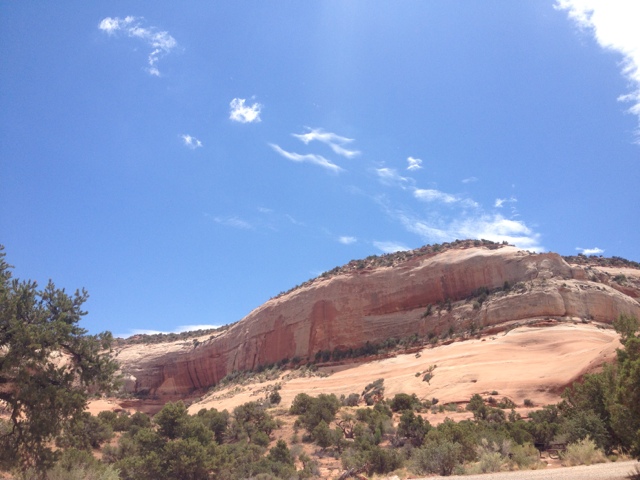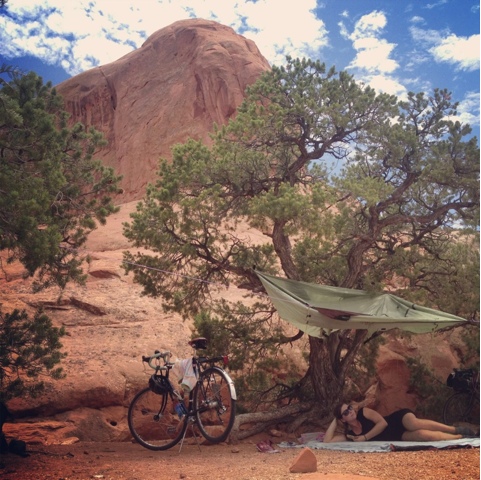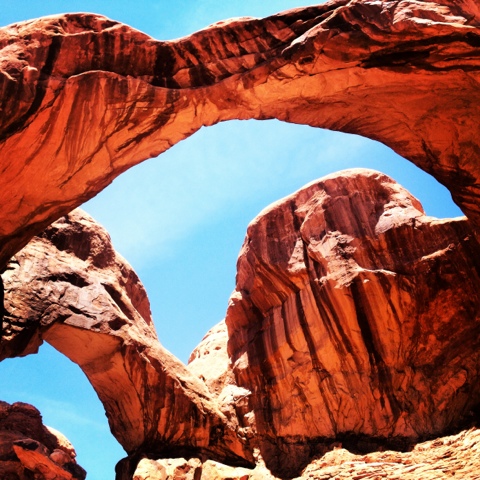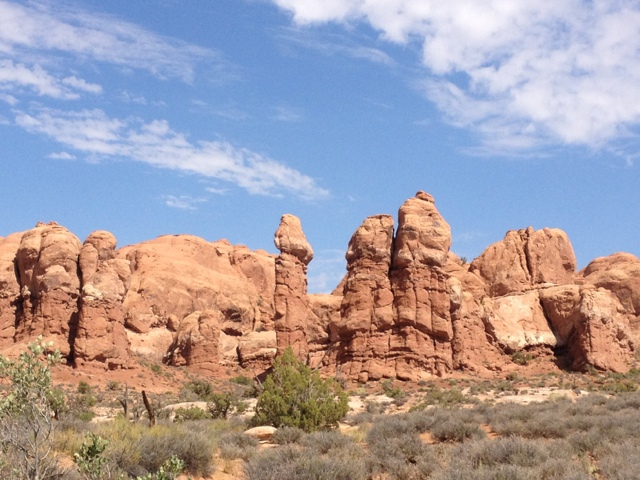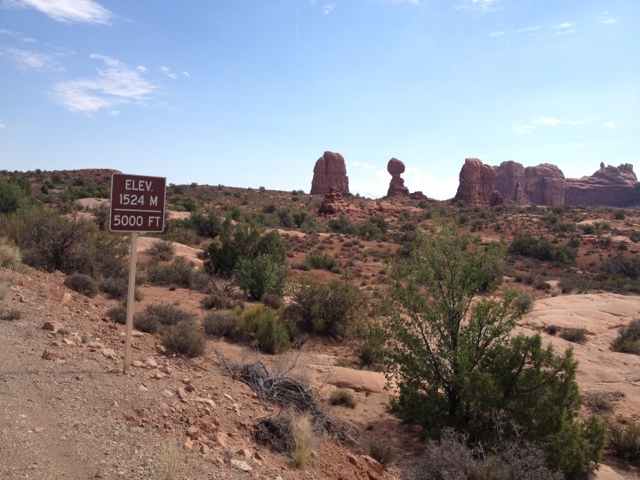DISCLAIMER— lots of thoughts here about race and culture in America from an American white girl from the South. These are my experiences and interpretations, which are obviously open to criticism.
Monday morning was Mesa Verde. You probably learned about Mesa Verde in elementary school— it’s the Pueblo apartments built into the side of cliff walls.
Since we were camping in the RV campground 20 miles away from the park sites, we figured we’d have plenty of time and energy to bike up the Mesa. In long waiting to buy tickets, we learned that the road to the top had no shoulder and was pretty dangerous for bikes. Then, the man in front of us started talking to us, turned out to be from Tampa, and offered us a ride to the top with him and his two daughters, Taylor and Mesa (who was named after the park). We accepted.
No sooner than he had introduced himself— his name was Will— he asked us if we had noticed anything weird about the people around here. Yes, in fact we did (more on weird Utah shit later). He said, “You know, theyre real naive. They don’t think anything bad can happen to them,” he said. “And I say, ’ Once you live in a place that has people who dress like Trayvon Martin, you wouldn’t be thinking like that.’” We had happened to stream NPR the night before, and we’re surprised to hear that there were still Trayvon protests a week after the Zimmerman verdict. We did the nervous liberal thing and laughed nervously as we got in the Pathfinder and climbed the Mesa.
Turns out Will was a fireman back in Tampa, and was almost finished taking a two week Out West vacation with his girls. Mesa was about 11 and Taylor looked about 15. I was amazed that they were all getting along so well, and they chattered on about playing Minecraft, the challenges of learning Korean, and relayed some of their dad’s best rescue stories. They were thrilled to pick up a hitchhiker. I asked Will is he often picked up hitchhikers, and he said, “I do, but I’m trained in self defense, so if anything happened it might be the next Trayvon, you know what I mean? Naw, I’m kidding, I’m kidding.”
Soooooooooo…. we told them about our journey so far, and Will warned us not to travel through Navajo country. “I took the girls there and they said,”Dad, don’t take us to a town like that again. They really hate the White Man.” Heres a guy who named his youngest daughter after a beautiful archeological site that highlights one of the most advanced Native North American cultures, and had traveled all the way across the country to show it to his kids. His older daughter Taylor corroborated his story by saying that there were vendors everywhere even where there were No Vending signs, and she was scared they were going to get robbed. General consensus was that the place sucked and might be dangerous.
So at this point, what do you do? There was a Savage Love episode recently where a girl called in saying that she was out with a group of friends and his guy kept being a douchebag to her— touching her, saying dirty shit to her. She wanted it to stop but didn’t want to make a scene. She wanted to know if she should just blow up at him and make everything awkward, or just laugh it off. Dan got a lot of callers saying that she could approach forcefully and quietly, telling him that his behavior was inappropriate and if he kept it up she would break his nose. If she didn’t say anything to him, the douchebag would continue to think that this was an appropriate way to act around women.
This guy Will was obviously identifying with us because we were white, and thought that his comments were appropriate because we shared his white privilege, though we gave him no reason to believe that we were on the same page as him. Meanwhile, we’re stuck in a car with him and his daughters for an hour as he’s doing us a favor, and aside from this racist mindset he seems like a decent dude. We copped out and didn’t say anything at all. Talking with Travis later, he said he felt ok taking that route, because with dudes like that you’re not going to change their minds, you’re just going to encourage an argument that is uncomfortable and awkward, and in the end you’re just where you ended up in the beginning. I agree that we weren’t going to change his mind, and that his aggressive political proclamations are probably influenced by right wing talk radio culture. Liberal and conservative America know each others’ arguments intimately, yet we rarely engage in reasonable discussion. This is probably how he talks with his friends all the time, and gets no challenge for voicing his opinions. If we did challenge him in any way, it would have opened a huge can of worms. So we did the easy thing and stayed quiet, and Will and his daughters went on their way thinking that we were white people just like them.
Is there an in between here? Is there an alternative between blowing up at someone and ignoring their racist sensibilities? Is there a way to tell an otherwise decent father that you don’t think like him and don’t assume that I do because we share the same privilege? If you’ve had similar experiences, please let me know how you dealt with them successfully, because I run into this shit all the time at home and I hate laughing it off and changing the subject like a coward.
Meanwhile, we reached the top of Mesa Verde. We said goodbye to our ride and joined the other hoards of white people who paid for tours to look at the remnants of this disappeared Native society. We went to Balcony House, which is one of the smaller sites, which only housed 25 or so people, in comparison to some of the other apartments which sheltered hundreds of people in the cliff sides. Our ranger, Patti Bell, told us her theory that very important people lived at Balcony House.
She based this on the security of the buildings, which at the time of habitation could only be entered and exited by crawling on hands and knees through a 12 ft tunnel.
We, however, got to climb a giant ladder to view the site.
The tour was pretty rad. The architecture was impressive and held up to time— the Pueblo societies abandoned these cities around the year 1250 AD.
Up until I was in 5th grade, I was convinced I would grow up to be an archeologist, and that was even without seeing an Indiana Jones movie. I was engrossed by books about Pompeii, and loved learning about mysteries of lost civilizations. No one knows why the Pueblo left— there are theories ranging from a 24 year drought, to loss of religious cohesion leading to fractured ideologies, or the good old Daniel Quinn (author of Ishmael) theory that all civilizations are built to fail.
I’m partial to the Quinn theory, combined with Travis’ theory that the corn and bean farmland on top of the Mesas eventually degraded due to decreased soil fertility. It makes sense— the land is sandy and sloped, and if all the sagebrush and pinyon pines were cleared out to make way for corn fields feeding over 30,000 people, I can definitely see there being devastating erosion and nutrient deficiencies. In any case, the ruins were fascinating and I’m glad I saw them.
HOWEVER. There’s still a lot to think about when visiting Native cultural sites. This is what you get for going to college— instead of just enjoying the pretty old apartment buildings, I spent the whole time at Mesa Verde thinking about the cultural implications of all these nice people from an oppressive culture treating Native culture as an extinct, separate existence to be marveled at and almost idolized.
Meanwhile, the living descendants and relatives of these idolized cultures are STILL AROUND, and they are most often treated with the contempt that Will and his daughters exhibited. In fact, we passed right by the Ute Mountain Ute Reservation on the way to Balcony House, with a sign posted boasting of Indian arts and crafts and food. There was almost no one in the parking lot to investigate the present day Indian culture that butts up against the tourist attractions.
Meanwhile, back at the tourist attractions, we visited the Mesa Verde museum right by Spruce Tree House. Along with archeological finds like pottery, baskets, sandals, and weavings, we saw the classic dioramas depicting Indian life through the centuries. Travis pointed out the clothing of the figures shown, and wondered why we haven’t heard discourse on it before.
All the figures are clothed in loincloths, carrying on their daily business of hunting, building, or shooting the shit in the marketplace. Yet when we visited another room around the corner, we saw what these people actually wore.
People wearing brightly colored and intricately woven clothing, made of cotton which was obtained through vast and intricate trading routes doesn’t exactly fit the white American ideal of the primitive savage. But it does help us cope with the cultural amnesia that allows us to think of these dissipated societies as an Other to be learned and studied in a museum, separate from the very real people who our culture continues to decimate present day.
I’m pretty much done here. We descended the Mesa coasting gloriously. Travis even saw a black bear cub, then spotted a new bird with his binoculars. We returned to our RV campsite, ate Indian food packs for dinner, and fell asleep.





